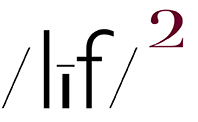WARNING: RANT TO FOLLOW…I just gotta get this monkey off my back…
…a couple days ago, I come across-over on T.O.P.-yet another exquisite example of Landscape Porn adulation. You know what to expect, picture wise, when you read picture descriptions like…
“The photographs are consistently beautiful, running the gamut from stunning vistas in perfect evening light, to dramatic storm-scapes, to telling details. Without exception they are technically immaculate, stunningly detailed, with a beautiful yet restrained color palette.”
Or, perhaps I should write, I know what to expect - puerile, romanticized, schmaltz / dreck. To be certain, uninspired, follow-the-camera-club-landscape-picture-making-rules landscape pictures are rather commonplace and, to be honest, should not be grounds for near apoplectic fits on my part. But the fact is, they most often incite such a reaction to my tender landscape picture sensibilities.
However, it is not the picture’s visual qualities-or lack thereof-that sets me off. Rather, it is the ongoing perpetuation of the big lie. Once again, I quote John Szarkowski (from the Introduction to the Robert Adams book, THE NEW WEST):
“As Americans we are scarred by the dream of innocence. In our hearts we believe that the only truly beautiful lanscape is an unpeople one. Unhappily, much in the record of out tenancy on this continent serves to confirm this view. So to wash our eyes of this depressing evidence we have raced deeper and deeper in the wilderness, pass the last stage-coach stop and the last motel, to see and claim a section of God’s own garden before our fellows arrive to despoil it…[N]ow however we are beginning to realize that there is no wilderness left…[A]s this recognition takes a firmer hold on our consciousness, it may become clear that a generous and accepting attitude toward nature requires we learn to share the earth not only with ice, dust, mosquitoes, starlings, coyotes, and chicken hawks, but even with other people.”
Just in case you don’t get it, let me be clear, pictorially, I am sick unto death of sappy, escapist, god’s own garden sentimentality. Walk as far you will into the so-called untouched-by-humankind wilderness, but the fact remains, there is no such thing as untouched by humankind.
My position on this situation, picture making wise, falls directly in line with the words of Robert Adams in his book, WHAT CAN WE BELIEVE WHERE:
“In common with many photographers, I began making pictures because I wanted to record what supports hope: the untranslatable mystery and beauty of the world. Along the way, however, the camera also caught evidence against hope, and I eventually concluded that this too belonged in pictures if they were to be truthful and useful….[A]s much as I try to stay away from abstactions, I often find myself asking three questions, and I repeat them here as a point of entry into this book: What does our geography compel us to believe? What does it allow us to believe? And what obligations, if any, follow from our beliefs?
So, some might think, shame on me-Adams, Szarkowski, et al-for even suggesting that a picture maker might have, in some situations, obligations in their picture making endeavors. What am I, some kind of a picture making commie, socialist, bleeding-heart, pinko? How dare I even hint that a picture should be truthful and/or somehow actually useful? You know, useful, as in, more meaningful than its use as an object of escapist decoration.
And, please, do not try to rationalize such escapist tripe as playing a part in raising people’s awareness of / appreciation for “nature”. Given that such pictures have been adorning walls, calendars, books, et al for generations, the evidence-the current state of the planet’s environmental state / health-can only support the fact that it ain’t getting that job done.
FYI, if you are wondering why I am so passionate about this issue, it is simply because I live in very unique place, the so-called Adirondack Park (it’s not a park, it is a forest preserve) the largest publicly protected wilderness area-and the largest National Historic Landmark-in the contiguous United States-bigger than Yellowstone, Yosemite, Grand Canyon, Glacier, and the Great Smokies National Parks combined.
The place is unique in that Adirondack forest preserve is a combination of public and private lands dedicated to the practice that the public lands are protected-by the NYS Constitution-as forever wild and together with the private lands are under the regulation of the Adirondack Park Agency, created in 1971 by the New York State Legislature to develop long-range land use plans for both public and private lands within the boundary of the Park. To date, this regulated public / private land use has demonstrated that humankind and the natural world can co-exist to the benefit of both. Read more about it here
